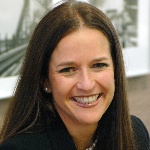 Yolande van Wyk, FNB
Yolande van Wyk, FNB
Africa is one of the fastest-growing markets in the world for phones, and that’s not going to change – but for businesses building a mobile presence, the lower-tech consumers must be remembered.
The importance of the pyramid base was emphasised by Yolande van Wyk, head of eWallet at First National Bank (FNB), at the ITWeb Mobility Summit, in Bryanston.
Van Wyk outlined FNB’s mobile strategy, noting that its approach has been to consider the continuum of products needed to serve people from all segments of the population. “We blocked everybody into a pyramid, into categories of affluent, banked, unbanked, unbankable and developed products to reach all of them.”
The mainstream smartphone app is an important part of the strategy. “The response to the app [launched in 2011] has been phenomenal, because the type of people who have smartphones are the type of people who create a lot of hype in the electronic world and social world. They’re powerful.” However, mobile strategy should extend beyond the smartphone, said Van Wyk.
A large segment of the population is, in practical terms, unbankable, she explained, noting that 23% of South Africans earn less than R1 000 a month and are often dependent on other people for income. A further 33% who could have bank accounts either choose not to or change bank accounts frequently enough to make electronic payments difficult.
The principles used when designing for this market were network agnosticism, phone agnosticism and simplicity, explained Van Wyk. This resulted in the eWallet, a banking product that allows payments to be sent without requiring a bank account.
The content of the product should be the object of focus, asserted Van Wyk, with the mobile technology simply a vehicle to enable a quality product. “It’s not just about having a cool app or banking the poor – it’s about looking across the market segments and having valid products, and layering mobile technology on top of that.
“A mistake we made was telling people how to use [eWallet],” she added. “It gets used by everybody in a different way – we have people using it for remittances, and youngsters paying each other back for drinks bought for each other. The customers should choose how to use it; you shouldn’t choose for them. Now we just sell the benefit.”
Always consider the size of the market being reached, Van Wyk concluded. “When we first built, we asked: what device are we going to build for? When do you build a mobisite, when you build an app? My rule of thumb is, if you’re going to reach 30% of your market, then go ahead, but otherwise the business case is more difficult, because [apps and mobisites] are difficult and expensive to maintain.”
|
Post a comment
|
Login.
All rights reserved © Copyright by ITWeb, 2011


